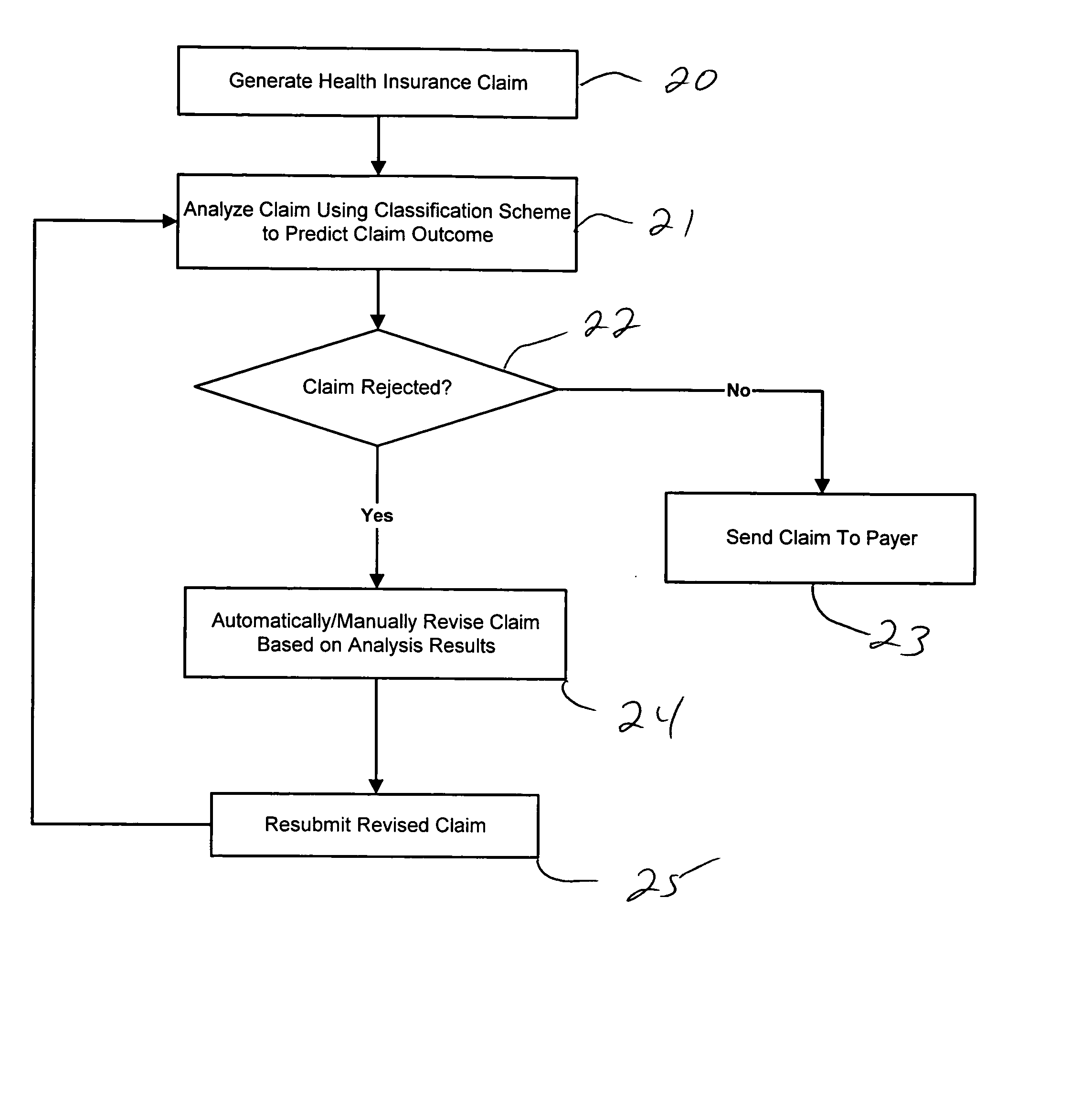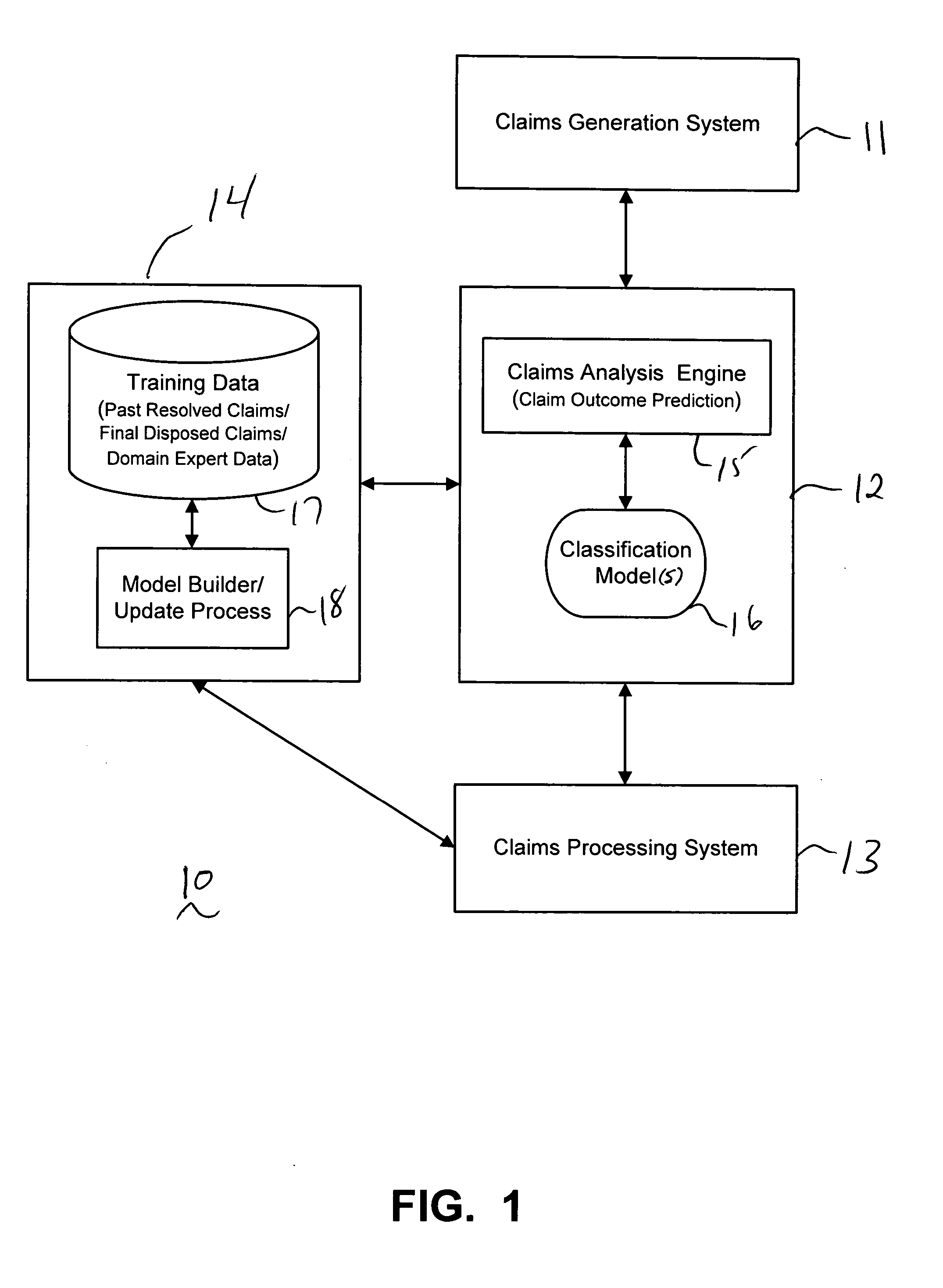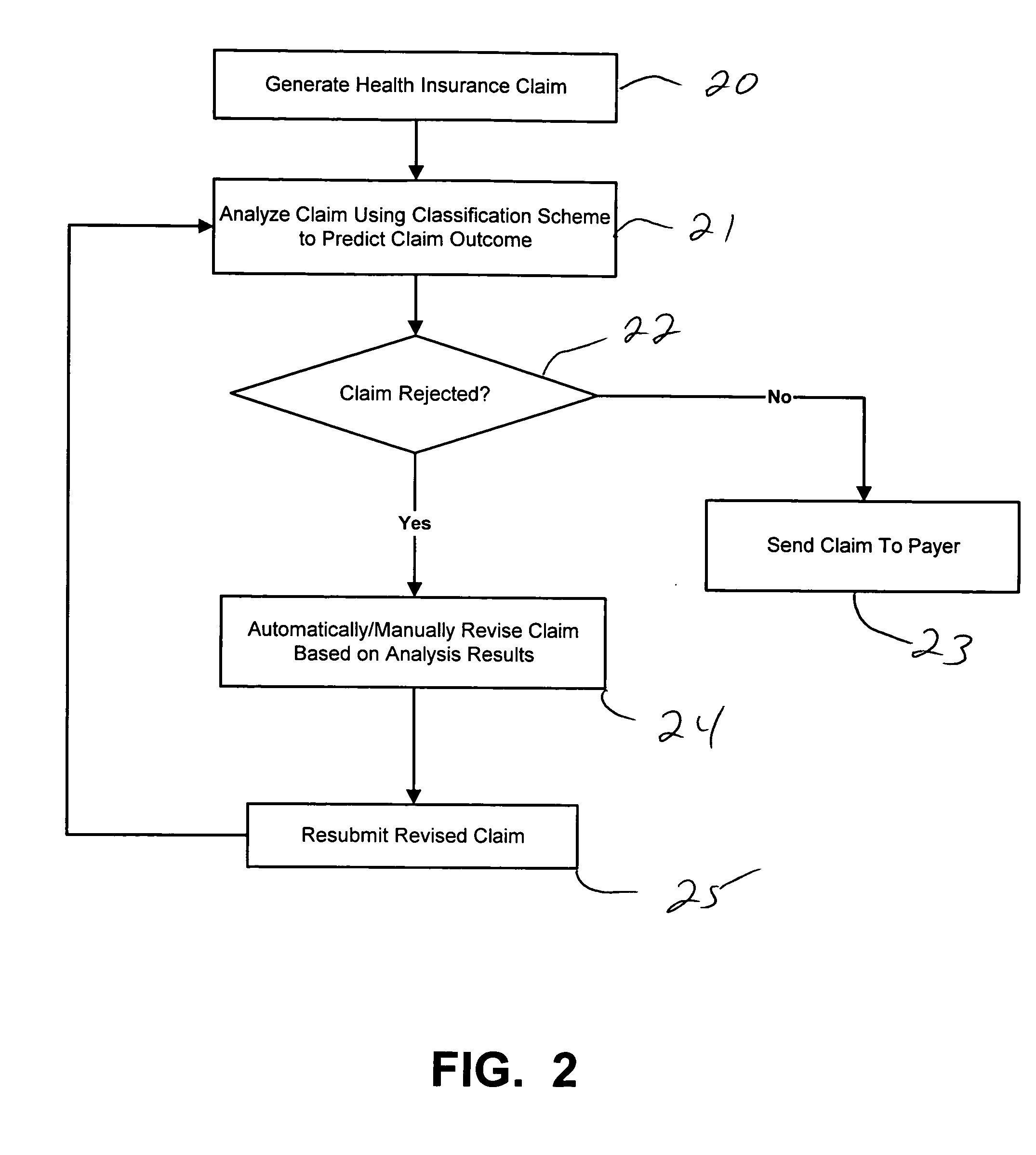Systems and methods for automated classification of health insurance claims to predict claim outcome
a health insurance and automatic classification technology, applied in the field of health insurance claims automatic classification and prediction of claim outcome, can solve the problems of affecting the accuracy of claim prediction
- Summary
- Abstract
- Description
- Claims
- Application Information
AI Technical Summary
Problems solved by technology
Method used
Image
Examples
Embodiment Construction
[0023] In general, exemplary embodiments of the present invention as described herein include systems and methods (e.g., claim scrubber tools and methods) for providing automated analysis of health insurance claims using classification schemes that can effectively and efficiently predict the outcome / disposition of medical claims that are to be submitted to target payers (e.g., health insurance companies) from health care providers. More specifically, exemplary systems and methods according to the invention can automatically classify health insurance claims using classification models that are trained to determine whether a health insurance claim will be accepted or rejected by a target payer, analyze why the claim will be rejected, and then target the intervention(s) needed to appropriately handle the claim. Systems and methods according to the invention implement classification schemes that can automatically and continuously “learn” to predict the outcome of medical claims by analy...
PUM
 Login to View More
Login to View More Abstract
Description
Claims
Application Information
 Login to View More
Login to View More - R&D
- Intellectual Property
- Life Sciences
- Materials
- Tech Scout
- Unparalleled Data Quality
- Higher Quality Content
- 60% Fewer Hallucinations
Browse by: Latest US Patents, China's latest patents, Technical Efficacy Thesaurus, Application Domain, Technology Topic, Popular Technical Reports.
© 2025 PatSnap. All rights reserved.Legal|Privacy policy|Modern Slavery Act Transparency Statement|Sitemap|About US| Contact US: help@patsnap.com



